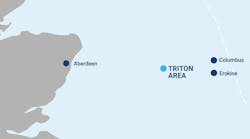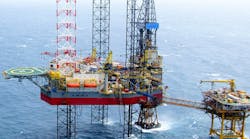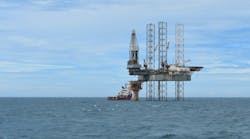Offshore staff
SINGAPORE – Sydney-based gas buyer AGL Energy has proposed to use a leased floating storage and regasification unit (FSRU), according to analyst Wood Mackenzie.
This would be stationed around 65 km (40.4 mi) south of Melbourne, importing LNG to ease gas shortage issues in southeast Australia.
Senior analyst Matt Howell said the proposal had attracted mixed reviews in light of domestic supply options already under development, mainly the CSG-LNG projects in Queensland to the north.
However, Wood Mackenzie believes there could be merits to importing LNG, pointing out that the projected cost of doing this and delivering the gas to Melbourne in 2021 is priced in the range of $5.91-6.60/mcf at a spot LNG price of $5.30/mmbtu (Japan delivery).
This is comparable to diversions from the Queensland CSG-LNG projects and would be a less costly option than much of the currently undeveloped gas resource in eastern Australia.
Around 85% of Victoria’s gas production comes from BHP/ExxonMobil through the Bass Strait joint venture and the small Minerva field, in which BHP has a 90% share.
An LNG import terminal, with an estimated annual cost of around $60 million, would provide additional bargaining power to gas buyers, Howell said.
In AGL’s case, this would be only 7.5% of what the company spent on gas in the 2016/2017 financial year, so even a potential import terminal could lead to gas purchase savings if the development is viewed as credible.
At the same time the import terminal is an additional expense and adds risk to the gas buyer, representing a movement away from its core business and opening additional exposure to the LNG spot price.
However, if no new developments are sanctioned in southeastern Australia, Howell continued, local markets will rely on gas from Queensland and the declining Bass Strait, and by 2028 there could be insufficient capacity in the existing pipeline network from Queensland to keep the region fully supplied.
10/11/2017




